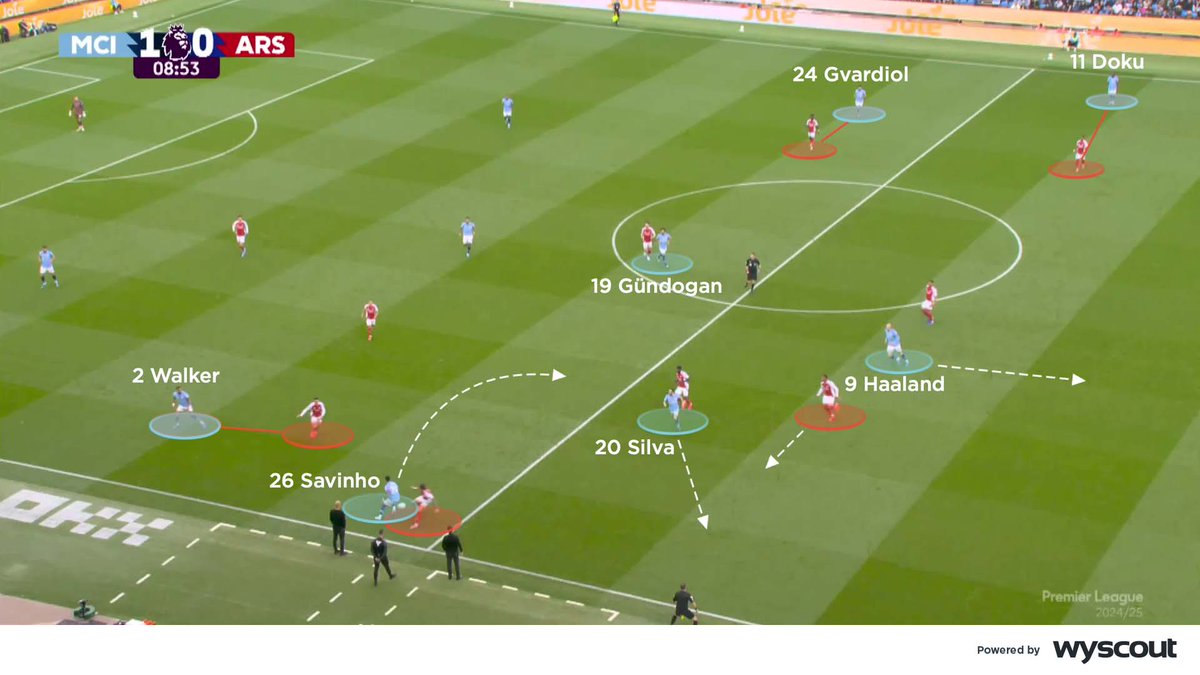Fresh analysis thread 🙌
How Spain and Germany’s changes in attack cancelled each other out in an intriguing tactical battle between Luis Enrique and Hansi Flick... 🧐🧵
🔋 @Wyscout
#ESP • #GER
How Spain and Germany’s changes in attack cancelled each other out in an intriguing tactical battle between Luis Enrique and Hansi Flick... 🧐🧵
🔋 @Wyscout
#ESP • #GER
Spain used a 4-3-3 structure and built play patiently from the back, despite Germany pressing aggressively from their 4-2-3-1. They moved the ball around the back line to isolate Thomas Müller, before a centre-back stepped out with the ball into midfield... 🧐🧵 

Olmo continued to move inside and Asensio dropped deep, in the process pulling Süle out of his position in Germany’s back line. This helped Spain to build out from the back and get around Germany’s increasingly effective high press... 🧐🧵 

In the second half, Germany continued to press aggressively, and Asensio proved key to Spain’s progress by dropping deep. He moved into the space behind Germany’s double pivot, who tightly marked Spain’s number eights, Gavi and Pedri... 🧐🧵 

When introduced, Morata dropped short to link like Asensio but also threatened Germany in behind. Alba pushed forward much earlier than Carvajal, with Pedri happy to drop in and cover, while Gavi was more advanced on the right, ready to overlap around the right midfielder... 🧐🧵 

Germany were set up in a 4-2-3-1. They initially posed a threat on the break, with Gündogan dropping to link play with the midfield runners. Once they managed to established spells of possession, Gündogan again dropped away from his number 10 slot, rotating with Goretzka... 🧐🧵 

Germany pressed high. Musiala jumped out to Spain centre-back Rodri, and in doing so formed a front line of two with Müller. This allowed Müller to focus on Aymeric Laporte and try to limit the Spain centre-back's opportunities to step into midfield with the ball... 🧐🧵 

In the second half, Germany went more attacking by pushing both full-backs forward, while the double pivot provided cover underneath the attacks. Both wide midfielders moved inside, with Musiala often drawing several Spanish players towards the ball... 🧐🧵 

Gnabry was moved to the left after Sané was introduced, with Musiala moving to a ten. Füllkrug was introduced as a more traditional nine, and he was able to pin the Spanish centre-backs far better than Müller. Sané then linked well with Musiala in central areas... 🧐🧵 

• • •
Missing some Tweet in this thread? You can try to
force a refresh
















